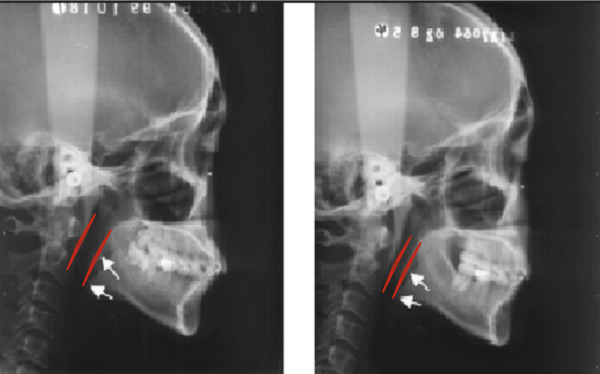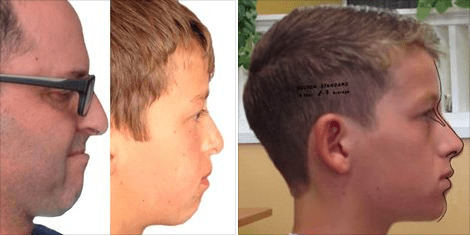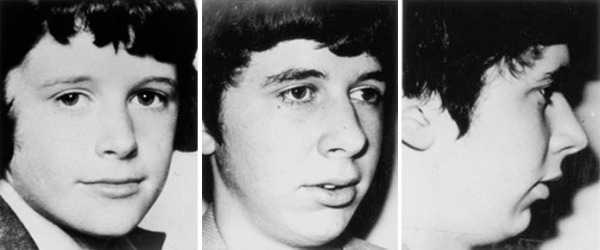More information on this topic can be found in the recently published book by Sandra Kahn and Paul R. Ehrlich, Jaws: The Story of a Hidden Epidemic.
Much attention is now rightly being given to producing enough food to nourish the some 9.5 billion people expected to be on Earth by 2050.[1] And people are raising critical questions about the influence of increasing loads of toxins in our foods, and their possible effects on us and (more importantly?) our children.[2] But there is one aspect of the nutritional-health situation that has not had sufficient exposure. It is rooted in one impact of the evolution of speech perhaps 40,000 years ago in what Jared Diamond famously described as our “great leap forward,” and one of the agricultural revolution some 10,000 years ago – ancient history with modern consequences.
The evolution of modern speech, instead of just grunts, led to an important change in human anatomy. Simply the top of the tube (larynx) leading to our lungs dropped making a larger air space (technically the supralaryngeal vocal tract or SVT) above it and behind the tongue that can be used to greatly modify the sounds our exhaling air can make. This has huge advantages, but like many evolutionary advantages it carried disadvantages as well. Thus the advantages of walking on our hind legs is paid for in back pain and hernias, while those of being able to whisper sweet nothings to a prospective lover are paid for with a higher probability of choking to death since air and food travel the same pipe in the neck (one side effect: making American thoracic surgeon Henry Judah Heimlich famous). Infants are spared this threat since the dropping of the larynx doesn’t occur until about 2 years old, allowing infants to suck and breathe simultaneously.
The agricultural revolution had another impact. For hundreds of millennia human women breast fed their children for years, eventually weaning them on the tough, chewy foods they themselves ate. Human developmental systems evolved so that the results of this regime were a healthy pattern of skull and jaw development. But with the evolution of agriculture these patterns began to change. Softer foods for weaning became available with a more sedentary life style and likely more cooking – cooking which hundreds of thousands of years earlier[3] reduced the need for long jaws and intense chewing to extract nutrients from raw food. Thus one result of the agricultural revolution has been an upsurge in serious oral problems, related to the soft foods onto which young infants in agricultural societies are usually weaned. Early weaning may lead to distorted patterns of muscle use that change the basic patterns of oral development. That, in turn, may cause badly fitting teeth (malocclusion), need to remove back molars (“wisdom teeth”), mouth breathing, problems with swallowing, lack of sleep because of trouble keeping the airway open (sleep apnea), as well as difficulties with speaking (which depends on proper control of the tongue and other muscles of the mouth).[4] These effects are probably exacerbated by patterns of bolting down soft “fast foods” that are common in children today.
Interestingly, one can see the effects of too soft a weaning diet by comparing the facial structure (and related airway openness) of rich and poor people from a few centuries ago. The jaws of the rich tend to be underdeveloped, palates narrowed, and the airways more compressed. This can often be detected in portraits of the rich where noses tend to be hooked down, the foreheads sloped backward, and the space between the tips of the nose and chin gets longer (Fig. 1) This is obvious in comparison to a person with evolutionarily normal facial-airway development (Fig. 2).

![Fig. 2. Proper facial structure and posture. This young man has had a very active life with minimal processed foods. He currently has all his teeth including wisdom teeth and did not need orthodontic treatment [Photo by Steven Green]](https://mahb.stanford.edu/wp-content/uploads/2015/03/FIG-2-PROPER-STRUCTURE-FB_IMG_1424470517596-e1425506730372.jpg)
The dropping of the larynx for speech, the shrinking of the oral cavity and placing the back of the tongue adjacent to the airway, combined with a lack of proper chewing in children modifies the development of the entire lower part of the skull and the jaw in ways that restrict the airway, which can be exacerbated by orthodontic treatment (Fig. 3), and promote mouth breathing (Fig. 4). The results of mouth breathing for health are manifold. Air taken in through the nose is warmed, moistened, and filtered, and small amounts of bactericidal nitric oxide[5] are added to the air going to the lungs.[6] It is likely that mouth breathing, which leads to hyperventilation causes asthma or makes it worse. The same goes for high blood pressure, heart disease, and other illness. As Figs. 1, 5-7 show, it also makes people look unattractive.

![Fig. 4. Mouth-breathing at night would cause the face of Sandra’s son not to grow properly. [Photo by David Kahn]](https://mahb.stanford.edu/wp-content/uploads/2015/03/mouthbreathing.jpg)
![Fig. 5. This boy developed an open-mouth facial posture when he acquired a gerbil, to which he was allergic, that slept in his room. His open mouth facial posture caused the mandible not to develop. [Courtesy of Dr. John Mew]](https://mahb.stanford.edu/wp-content/uploads/2015/03/FIG.-5-Gerball1-e1425506859324.jpg)
Ideally, of course, these negative effects could by reduced at the earliest stages by extending breast feeding and closing the “baby food” industry. They can be treated in children by using a bulky apparatus that trains them to keep their lower jaw forward, and by providing a healthy diet. Unhappily, many standard orthodontic procedures work in exactly the wrong direction, focusing on correcting the problems rather than correcting their causes as early as possible (Fig. 3). Work is now going forward on finding exercises for the facial muscles and positioning the jaw and tongue properly, which can be very helpful in young children (Figs. 6 & 7). Fixing these problems in adults is very difficult, often involving lengthy and painful operations with uncertain results. Most needed is a widespread education campaign to solve this eminently solvable problem.

![Fig. 7. Charlotte at 10 years old was told she would need to have jaw surgery to deal with an upper jaw that sat 14mm in front of the mandible. Orthotropics and facial posture training largely corrected the problem in six years. [Courtesy of Dr. John Mew]](https://mahb.stanford.edu/wp-content/uploads/2015/03/FIG.-7-Charlotte.jpg)
As in many other aspects of the food system, there is a crying need to expand education and mobilize civil society so that all aspects of nourishing humanity, from the basics of agriculture to the basics of weaning and breathing are covered for everyone.
[1] Foley JA. 2011. Can we feed the world and sustain the planet? A five-step global plan could double food production by 2050 while greatly reducing environmental damage. Scientific American: 60-65.
[2] Cribb J. 2014. Poisoned Planet: How Constant Exposure to Man-made Chemicals is Putting Your Life at Risk. Crows Nest, NSW, Australia: Allen and Unwin.
[3] Or even a million or more – this is still uncertain.
[4] Neiva F, Cattoni D, Ramos J, Issler H. 2003. Early weaning: implications to oral motor development. J Pediatr (Rio J) 79: 7-12.
[5] http://www.ncbi.nlm.nih.gov/pmc/articles/PMC1745376/pdf/v054p00947.pdf
[6] http://www.breathing.com/articles/nose-breathing.htm
MAHB-UTS Blogs are a joint venture between the University of Technology Sydney and the Millennium Alliance for Humanity and the Biosphere. Questions should be directed to joan@mahbonline.org
MAHB Blog: https://mahb.stanford.edu/blog/food-and-breathing-problem/
The views and opinions expressed through the MAHB Website are those of the contributing authors and do not necessarily reflect an official position of the MAHB. The MAHB aims to share a range of perspectives and welcomes the discussions that they prompt.
